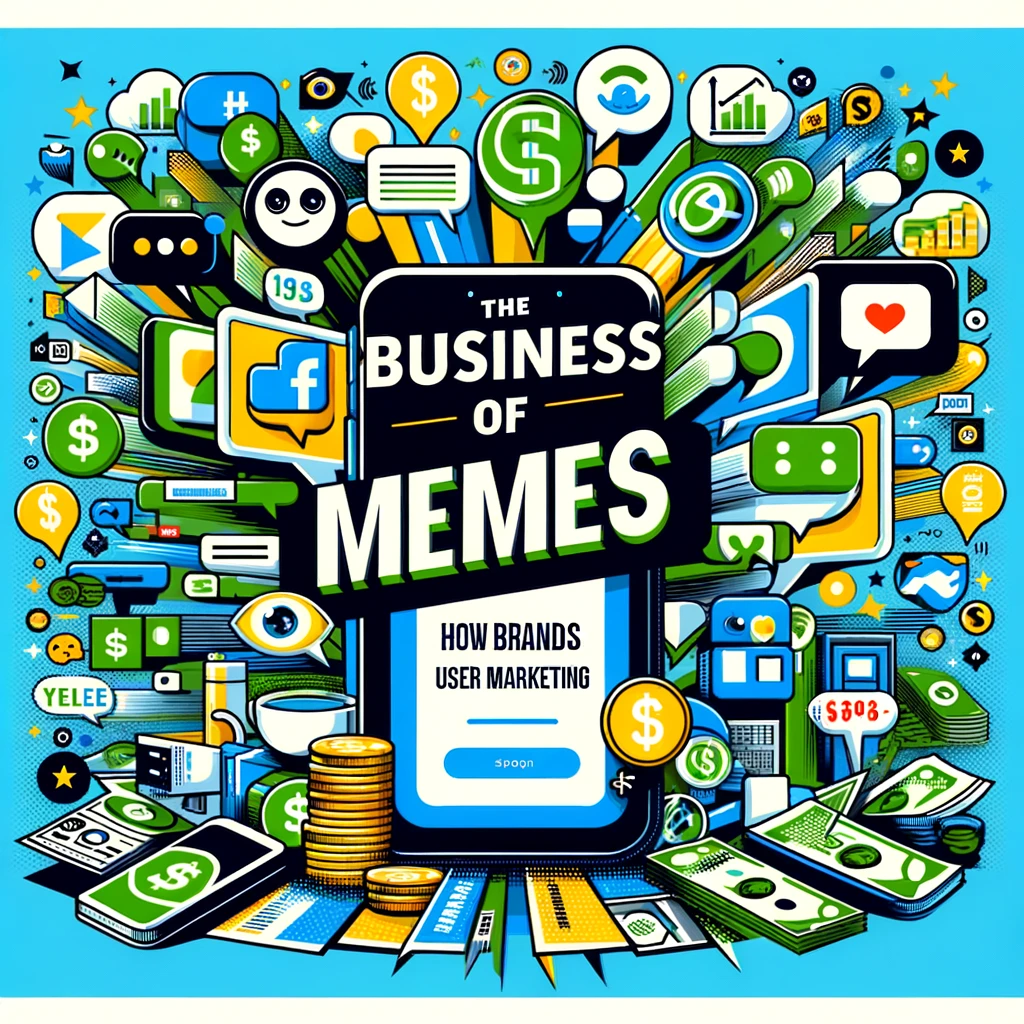The Business of Memes: How Brands Use Memes for Marketing

In the digital age, memes have transcended their origins as simple internet jokes to become a powerful tool for marketing and brand engagement. With their ability to capture attention, evoke emotions, and spread virally, memes offer brands a unique way to connect with audiences, especially younger demographics. This article explores how brands use memes for marketing, examines successful examples, and discusses the potential risks and future trends in meme marketing.
Memes in Brand Marketing
Memes are inherently shareable and often humorous, making them an effective way for brands to engage with their target audience in a more informal and relatable manner. By leveraging popular memes, brands can tap into existing cultural conversations and enhance their relevance in the eyes of consumers.
-
Relatability and Humor
- Overview: Memes allow brands to show a more human side, using humor and relatability to create a connection with their audience.
- Example: Wendy’s Twitter account is famous for its witty and humorous tweets that often incorporate popular memes. By engaging in playful banter with followers and other brands, Wendy's has successfully built a relatable and entertaining online persona.
-
Viral Potential
- Overview: Memes have the potential to go viral, spreading quickly across social media platforms and reaching a wide audience.
- Example: Old Spice’s “The Man Your Man Could Smell Like” campaign used humorous and meme-worthy content to capture attention. The campaign’s quirky videos and images were widely shared, significantly boosting brand visibility.
-
Engagement and Participation
- Overview: Memes encourage audience participation and engagement, as users are more likely to share and create their own versions of meme-based content.
- Example: The “Share a Coke” campaign by Coca-Cola personalized bottles with popular names and phrases. This led to a wave of user-generated content, with consumers sharing photos and memes of their personalized Coke bottles on social media.
Successful Examples of Meme Marketing
-
KFC and the “11 Herbs and Spices” Twitter Campaign
- Description: KFC followed 11 people on Twitter (six men named Herb and the five Spice Girls) as a nod to its secret recipe of 11 herbs and spices. When a user discovered this and tweeted about it, the tweet went viral. KFC’s subtle and clever use of humor resonated with audiences and garnered significant media coverage.
- Impact: The campaign generated millions of impressions and was praised for its creativity and originality.
-
Netflix’s “Bird Box” Challenge
- Description: After the release of the movie Bird Box, memes and challenges based on the film’s concept of navigating the world blindfolded spread rapidly on social media. Netflix capitalized on this trend by engaging with the memes and even issuing a playful safety warning about the challenge.
- Impact: The meme-driven buzz contributed to the film’s massive viewership and kept it trending for weeks.
-
Popeyes vs. Chick-fil-A Chicken Sandwich War
- Description: When Popeyes introduced its new chicken sandwich, a Twitter feud with Chick-fil-A sparked a viral meme war. Users created and shared countless memes comparing the two sandwiches, driving huge online engagement.
- Impact: Popeyes saw a significant boost in sales and brand awareness, with the sandwich selling out nationwide.
The Risks of Meme Marketing
While meme marketing can be highly effective, it also comes with risks:
-
Misunderstanding the Audience
- Risk: Brands that misinterpret the cultural context of a meme or fail to understand their audience can come across as out-of-touch or cringe-worthy.
- Example: Pepsi’s 2017 ad featuring Kendall Jenner, which attempted to capitalize on protest imagery, was widely criticized for being tone-deaf and trivializing social justice movements.
-
Negative Viral Potential
- Risk: Just as memes can spread positive messages, they can also amplify negative publicity.
- Example: The #McDStories campaign by McDonald's intended to highlight positive customer experiences but was quickly hijacked by users sharing negative stories, leading to widespread negative attention.
-
Over-commercialization
- Risk: Overusing memes for marketing can lead to audience fatigue and diminish the authenticity of the brand’s message.
- Example: When brands repeatedly use the same memes or formats without creativity, audiences may perceive them as trying too hard to be trendy, reducing the impact of the marketing efforts.
The Future of Meme Marketing
As technology and social media continue to evolve, so too will meme marketing strategies. Here are some potential trends:
-
Personalization and AI
- Trend: Brands may use artificial intelligence and data analytics to create personalized memes tailored to specific audience segments.
- Example: AI-driven meme generators that customize content based on user preferences and behaviors could enhance engagement and relevance.
-
Collaborations with Meme Creators
- Trend: Partnering with popular meme creators and influencers can help brands produce authentic and relatable content.
- Example: Brands may sponsor meme accounts or collaborate on content creation to reach broader audiences.
-
Interactive and Immersive Memes
- Trend: Advances in augmented reality (AR) and virtual reality (VR) could lead to the creation of interactive and immersive meme experiences.
- Example: AR filters and VR environments that allow users to engage with memes in new and innovative ways.
Memes have become an integral part of digital marketing, offering brands a powerful tool to engage with audiences in a relatable and entertaining manner. By understanding the nuances of meme culture and staying attuned to their audience, brands can harness the viral potential of memes to enhance their marketing efforts. However, it is essential to approach meme marketing with creativity and authenticity to avoid potential pitfalls and maintain a genuine connection with consumers. As technology and social media platforms continue to evolve, the future of meme marketing promises to be dynamic and full of new opportunities.